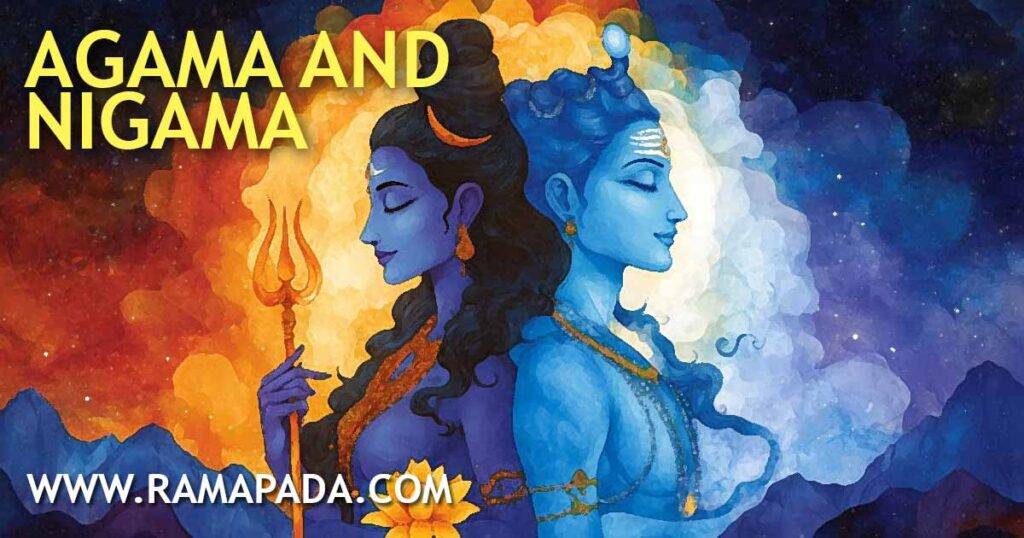In the spiritual landscape of Hinduism, Agama and Nigama represent two complementary streams of divine revelation. These traditions are not merely textual categories—they embody distinct modes of transmission, ritual practice, and philosophical depth that have shaped temple worship, metaphysical inquiry, and esoteric disciplines for millennia.
What Is Agama?
The word “agama” (from Sanskrit: “āgama” meaning “that which has come”) refers to scriptures, which received knowledge, often revealed by a deity to a devotee. These texts are dialogical, typically featuring Shiva as the teacher and Shakti as the disciple, and they form the foundation of temple rituals, iconography, and spiritual techniques.
Key Features of Agama:
- Focus on ritual worship, especially in temples
- Detailed guidance on mantra, yantra, and tantra
- Emphasis on personal experience and devotion
- Foundational to Shaiva, Vaishnava, and Shakta traditions
Agamas, considered manuals of divine practice, offering structured paths to liberation through devotion, meditation, and sacred geometry.
What Is Nigama?
Nigama (from Sanskrit: “nigama” meaning “that which is extracted or concluded”) refers to Vedic knowledge, often seen as the highest truth or final conclusion. In contrast to Agama, Nigama texts typically feature Shakti as the teacher and Shiva as the disciple, symbolizing the transmission of wisdom from the feminine principle.
Core Aspects of Nigama:
- Rooted in Vedic rituals and sacrificial practices
- Emphasis on Yajña (sacrifice) and cosmic order
- Associated with Shruti—knowledge that is heard or revealed
- Seen as apauruṣeya (not of human origin)
Nigama represents the philosophical and ritualistic backbone of Hindu dharma, guiding societal and spiritual life through timeless principles.
Agama vs. Nigama: A Sacred Dialogue
The interplay between Agama and Nigama is not oppositional but complementary. In Tantric traditions, this is dynamic and beautifully illustrated:
- When Shiva teaches Shakti, the text called Agama
- When Shakti teaches Shiva, it called Nigama
This mutual exchange reflects the non-dual essence of Hindu spirituality, where divine masculine and feminine energies co-create the universe and its wisdom.

